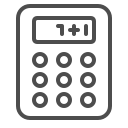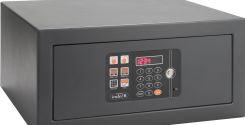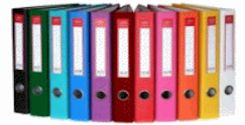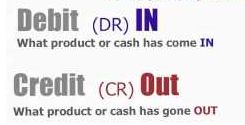Fritz Sybergs Vej 9
DK 8270 Hojbjerg
Scandinavia
info@dynamicbusinessplan.com


Stock Registration
To keep proper track of company´s goods you could introduce a stock registration.
You need to have a system which can help you keep track of the goods bought and sold. Without a stock keeping system you will not notice if goods are disappearing by wrong channels.
- Example:
If a shop buys 12 containers of cooking oil the shop keeper will put them on the shelves and the cooking oil is now considered as stock in the shop.
These 12 containers have to be registered on a stock card.
If the shop sells 4 containers of cooking oil this sale has to be registered on the stock card.
The stock card and the registration of the cooking oil could look like this:
STOCK CARD
ITEM: Cooking oil UNIT: 2,5 l container
|
Date |
Supplier/consumer |
Quantity |
Balance |
Purchase value |
||
| . | . |
IN |
OUT |
. |
Unit $ |
Total $ |
|
1.1.05 |
Opening stock |
. | . |
3 |
2 |
6 |
|
2.1.05 |
Omar Wholesale |
12 |
. |
15 |
2 |
30 |
|
5.1.05 |
Shop sale, 2-4.1.05 |
. |
4 |
11 |
2 |
22 |
| . | . | . | . | . | . | . |
The stock card has the following headings:
Date
Use the date stated on the invoice.

Supplier/consumer
Write the name of the supplier of the item. If selling an item you write the name of the customer, if possible.
Quantity
Received: When you buy e.g. 12 containers of cooking oil it is registered here.
Issued: When you sell e.g. 4 containers of cooking oil it is registered here.
Balance
The balance shows how many containers of cooking oil the shop should have on the selves.
The balance is found by:
- adding the received goods to the previous number or
- subtracting the issued goods from the previous number
The Opening balance
In this case the stock comes from the stock taking made 31. of December 2004. At stock taking you go to the shelves and actually count the number of each item of goods. The counted goods should be the same as stated on the stock card. If not, something is wrong.
Purchase Value
Unit: Here you register the unit purchase price (not the price when you sell it from the shop but the price when you bought it from the wholesale). E.g. the unit price of the cooking oil is $ 2 per container. You always have to use the actual purchase price.
Total: You find the total value like this:
For each new line on the stock card you calculate the value of the items, i.e.: the number of items x unit value. This sum you add to the total value of the above line and you then have the new total value.
Price rise
You may have in stock a number of identical items which you have
bought at different prices due to general rise.
When you register incoming goods you - as mentioned above - always use the
actual purchase price.
When you register the value of items going out of the stock you must always use the latest purchase value. You should not begin to think about how much the different containers actually was bought at and use the old prices for calculation.
Bookkeeper
The registration on stock cards is usually done by the bookkeeper. So when you receive the vouchers from the cashier after the cash reconciliation it is a good idea to do the stock registration.

Month end is approaching - Keep calm and carry on accounting.
- Unknown accountant


























